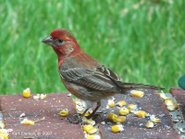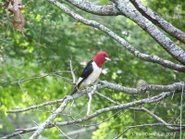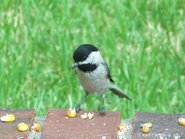I had a great day of birding which happened out of luck. I had to repair a flat on a tire and was outside on the driveway when a chatter arose above my head. It was a male Red-Bellied Woodpecker and the juvenile Red-Headed Woodpecker. They were not playing nice, to say the least. I was excited about this as I've never seen a male Red-Bellied in my yard, only the female. The juvenile Red-Head is also one of my favorites as I seen it grow up over the six months.
 If you look closely, you can seen the Red-Head is beginning to lose it's juvenile plumage and starting to look more like an adult. Compare its plumage to one of these early posts which shows it distinct juvenile plumage.
If you look closely, you can seen the Red-Head is beginning to lose it's juvenile plumage and starting to look more like an adult. Compare its plumage to one of these early posts which shows it distinct juvenile plumage.





























 I noticed the other day that my suet feeder had a unusual hole up at the top of the block. Most the birds that frequent the suet block are Carolina Wrens and
I noticed the other day that my suet feeder had a unusual hole up at the top of the block. Most the birds that frequent the suet block are Carolina Wrens and 



































